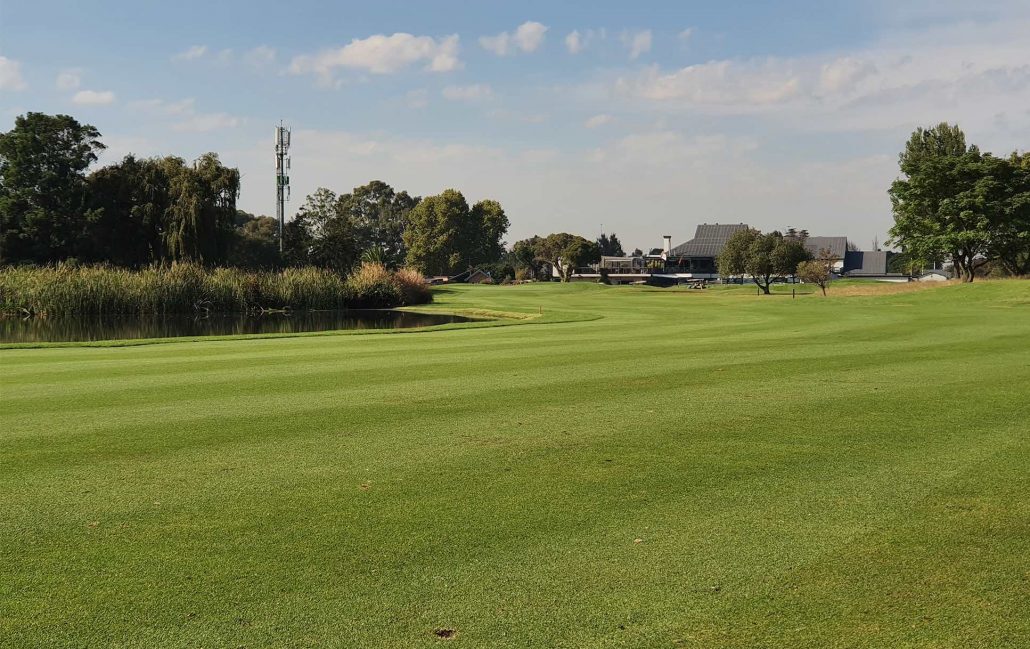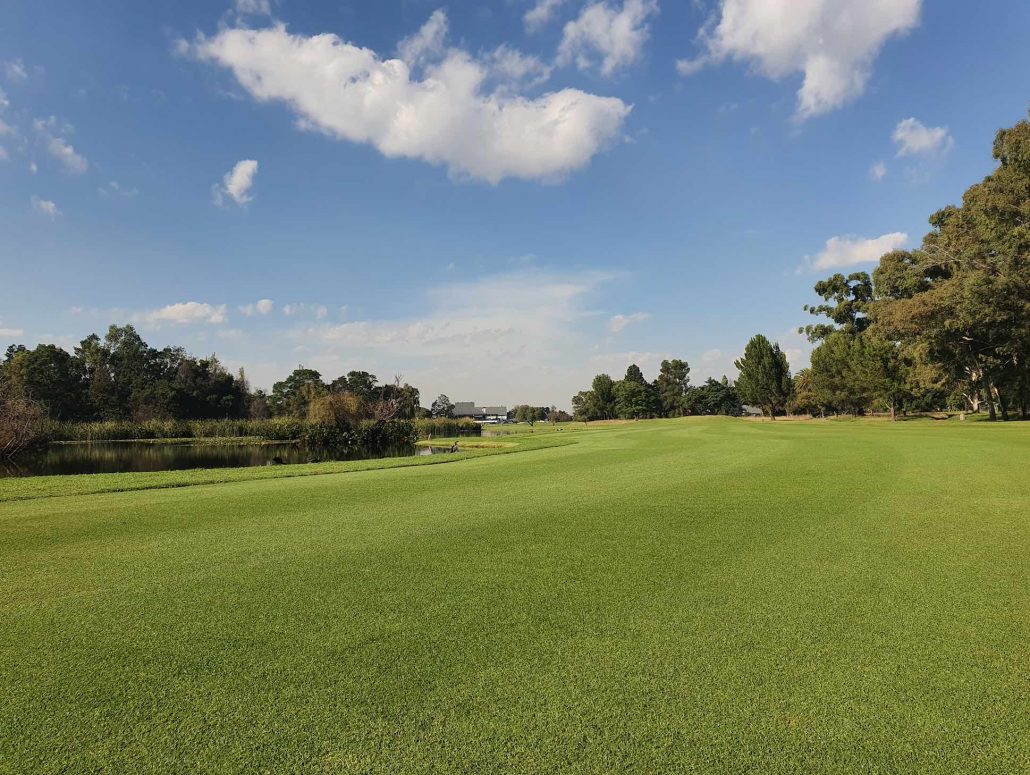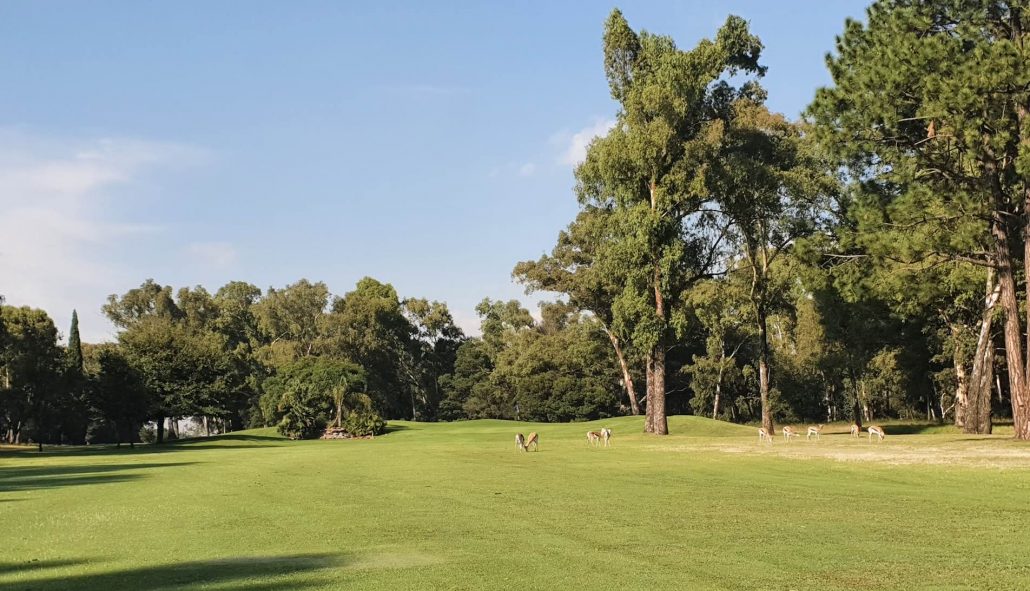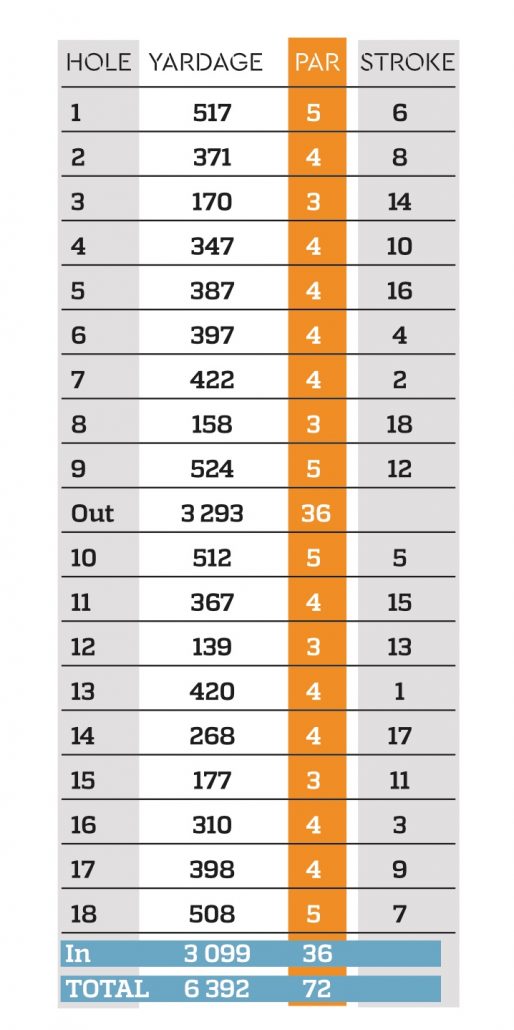Benoni Country Club has a demanding layout that has stood the test of time, writes SIMON OSLER.
One of the recurring themes that come up when discussing Benoni Country Club’s golf course is the strength of its holes.
All the par threes and the par fives would be considered to be testing.
While the fairways are big and long, the greens are small and challenging, many being raised and with punishing run-offs. There’s a huge premium on accuracy and it will test even the best of players.
This old-style parkland course is set in a tranquil area teeming with wildlife. You are likely to spot impala, springbok, duiker and a few other species, along with many varieties of birds. Peacocks are abundant.
The course was opened in 1906, but the first trees, of which there is a huge variety, were planted more than 125 years ago and many will be in play for a lot of players.
In the centre of the course is a 300m driving range and chipping area.
With almost 4,000 rounds a month being played, not to mention various professional events being held during the year, the country club is a vibrant place to visit. Let’s take a quick tour of the course, from the white tees.
The 1st hole is a par five which stretches to 517m from the club tee. A slight fade off the tee down a tree-lined fairway will work best. You can opt for the left half of the fairway which offers an easier landing area, but then you will have a tougher approach to the green. Avoid the deepish bunker guarding the front right area of the green and you can set up a possible birdie putt.
That sets up the opportunity to play positionally on the 2nd hole, which is fairly short at 371m. Find a club to get you about 220m down the fairway and that will open up an opportunity to be fairly aggressive with short club in hand.
The 3rd hole is a tough par three that will demand precision even from 170m off the tee. There’s water on the right, just short of the green, which has a large bunker on the left offering it protection from those who bail out on their shot in an attempt to go well left of that water. Your options are either to fly the ball past all the trouble, or play it short and leave yourself a bump-and-run up the approach to the green.
The 4th hole is a par four back up the hill. There are houses to avoid down the right and while the left is the best option, there is a row of trees to contend with. A fade up the middle which drifts towards the right half of the fairway will open up the green which is protected by bunkers left and right. Long is not an option.
A right-to-left dogleg greets you from the 5th tee box. Avoid the fairway bunkers on the right of the fairway off the tee and you will have a clear shot at the green, which is protected by a large bunker on the front left.
The 6th favours a gentle draw off the tee, but you need to be accurate as there are trees down both sides of the fairway. The left half of the fairway is the best spot to aim for to open up the best angle to the green, which has quite a bit of slope.
The 7th is the stroke two and at 422m part of its defence is its length, though the fairway is generously wide. Your long approach shot will be up the hill to an elevated green set at around 45 degrees to the fairway.
The par-three 8th offers a huge range of tees set either side of a copse of trees. With the club tees offering shots from 150-160m, part of the challenge is clearing the water in front of the green but not going too far over it as the green is fairly tight. I watched a fourball of seniors spray their shots left and right to avoid the water. Their short game was put to the test to get up and down but the course beat them all.
Closing out the front nine is a lengthy par five which plays as a slight right-to-left dogleg of more than 520m. Your first aim is to avoid the large fairway bunker at around 240m and then from there on you have a clear shot at the green. There’s no significant trouble after that, and if you miss the bunker about 75m short of the green you have a good chance of sticking a wedge shot close to a small green which is protected by only one small pot bunker on the front right. Definitely a birdie chance to finish the nine and head off for a quick refreshment at the halfway house.
The 10th is another lengthy par five with water all the way down the left, while there’s a fairway bunker on the right which will probably be a good sight line for most people who will not be able to reach it. With the hole being a slight dogleg to the left, playing a draw off the tee will be ideal. If you are unable to move the ball that way, then take aim at the right edge of the water and fade it away from the trouble.
Some people might describe this hole as ‘tree-lined’ but the fairway and rough is probably 80-90m wide so while there is forest on both sides, it should not come into play at all. Your approach shot to the green needs to avoid the bunkers on the right front and back left. The green is small, with a fair bit of slope from the back. A tough target to hit.
The short par-four 11th plays gently down the hill. Again, the generously wide fairway will take the pressure off and should leave you with a shortish iron into a green protected by three bunkers. If you want to take them out of play, leave your approach just short of the green and Texas it from there. Definitely a scoring opportunity.
The first of the par threes on the back nine is next up, with the 12th hole being around 140m in length with a slight downhill. There is also a large bunker guarding the front of the green which you really want to avoid as it’s pretty deep. There’s a small backstop behind the green so being a couple of metres long shouldn’t hurt you as the ball should come back on to the green. A good miss would be just off the right and fractionally short as you will have an unimpeded run-up to the pin from there.
And then there’s the 13th. Lucky for some, it’s the stroke one and it’s a monster par four at 420m from the club tee. It’s slightly uphill and into the wind as well. If ever you need a big booming drive down the centre of the fairway, now is the time to deliver. The bunker on the right should not be in play but the ones down the left of the fairway might be. There is a little room to manoeuvre as you approach the left half of the raised green.
The bigger hitters will be eager to get to the 14th as they will be thinking of driving it. A power fade will get them past the trees on the right. If you can’t carry 270m, there’s the option of playing down the left-hand side with a long-iron or hybrid off the tee and leaving a short-iron or wedge in. Knocking it in close and avoiding the large bunker on the right and a pond on the left definitely provides another opportunity for a birdie.
The last of the par threes is next up, at around 180m, slightly uphill and into the breeze. Another small green, your best bet is to aim for the left half of it.
The 16th is again driveable for the big hitters – I watched as a couple of players with Tour aspirations hit driver over the green. That’s more than 330m to the back of the green, uphill, though the wind was helping fractionally and they were cutting off the corner of the dogleg. For us mere mortals, the practical way to play the hole is to hit a shot around 180-200m up to the corner of the dogleg and be left with a short club in to the green.
The 17th used to be a par five but has been brought down to a par four. If played from the championship tee it would be a par five for most people. A long tough hole of around 400m up the hill, it’s stroke nine but has some challenge. Trees are in play all the way up the right, and there’s a fairway bunker in play at driving distance for most players. One of the youngsters I was watching hit his drive more than 350m, leaving him just 50m to the flag. Astounding … but that’s not how ‘normal’ players would tackle the hole.

The 18th is a par five and the signature hole. There’s no doubt that this is a tough and challenging course. Many of the local professionals are regular visitors because of the challenge it poses. Jaco van Zyl rates the course highly.
The club is one of the pillars of the sport in Ekurhuleni and features near the top of the leagues in the men’s, juniors and mid-amateurs.
The country club offers plenty of other sports including bowls, squash and tennis, along with padel ball and mountain biking. It also hosts the Harriers running club and a ladies gym, as well as the SuperSport United soccer schools.
There have been improvements made to the club facilities recently and there is a great vibe in what is clearly a hub for the local sporting community. Golfers who enjoy a challenge should definitely be adding it to their course bucket list.
SIGNATURE HOLE
18th hole, 508m, par five

The 18th hole at Benoni Country Club is one of the finest finishing holes you will play in South Africa. Resident club professional Darren Millington talks us through it.
‘This is a real test of nerves and brains. Starting off with an intimidating tee shot that is guarded by water all the way along the left side and a forest of trees on the right, there is almost no room for error.
‘For the second shot, a decision will have to be made, for the longer and average-length player it will prove an inviting but dangerous approach into a long, narrow, well-contoured green, with water and two greenside bunkers to the left and a sharp run-off to the right, with out of bounds lurking just over the back of the green.
‘The shorter hitter will lay up, leaving a wedge or short-iron in for their third.
‘Par on this lengthy hole is very achievable, and those who are willing to take a risk give themselves an opportunity to make a birdie or even an eagle.
‘However, with that comes the chance that it could go horribly wrong with a double- or triple-bogey, depending on how brave the golfer is willing to be.
‘It’s become the signature hole not only because it is a stunning finishing hole but also because it is an archetypal ultimate risk-and-reward hole.
‘It is a tough par five and is so visually appealing and daunting, especially from the elevated tee, and in terms of how it’s shaped and how it follows the natural lie of the land.’
GREENFEES
Weekdays:
Full members: R280
Senior members: R180
Visitors: R280
Weekends: Saturday
Full members: R300
Senior members: R300
Visitors: R450
Weekends: Sunday
Full members: R300
Senior members: R300
Visitors: R360
ROAD DISTANCES
Pretoria: 69km
Johannesburg: 32km
Bloemfontein: 434km
Durban: 557km
GETTING THERE
From OR Tambo International: Get on R21 in Jet Park from Jones Rd. Take N12 to Snake Rd in Kleinfontein. Then take exit 440 to Morris Avenue in Morehill.
GPS CO-ORDINATES
S26.14213”, W28.34164”
ADDRESS
Morris Avenue, Morehill
Benoni
1501
CONTACT DETAILS
General: (011) 849 5211
WEB DETAILS
– This article first appeared in the October 2022 issue of Compleat Golfer magazine.










